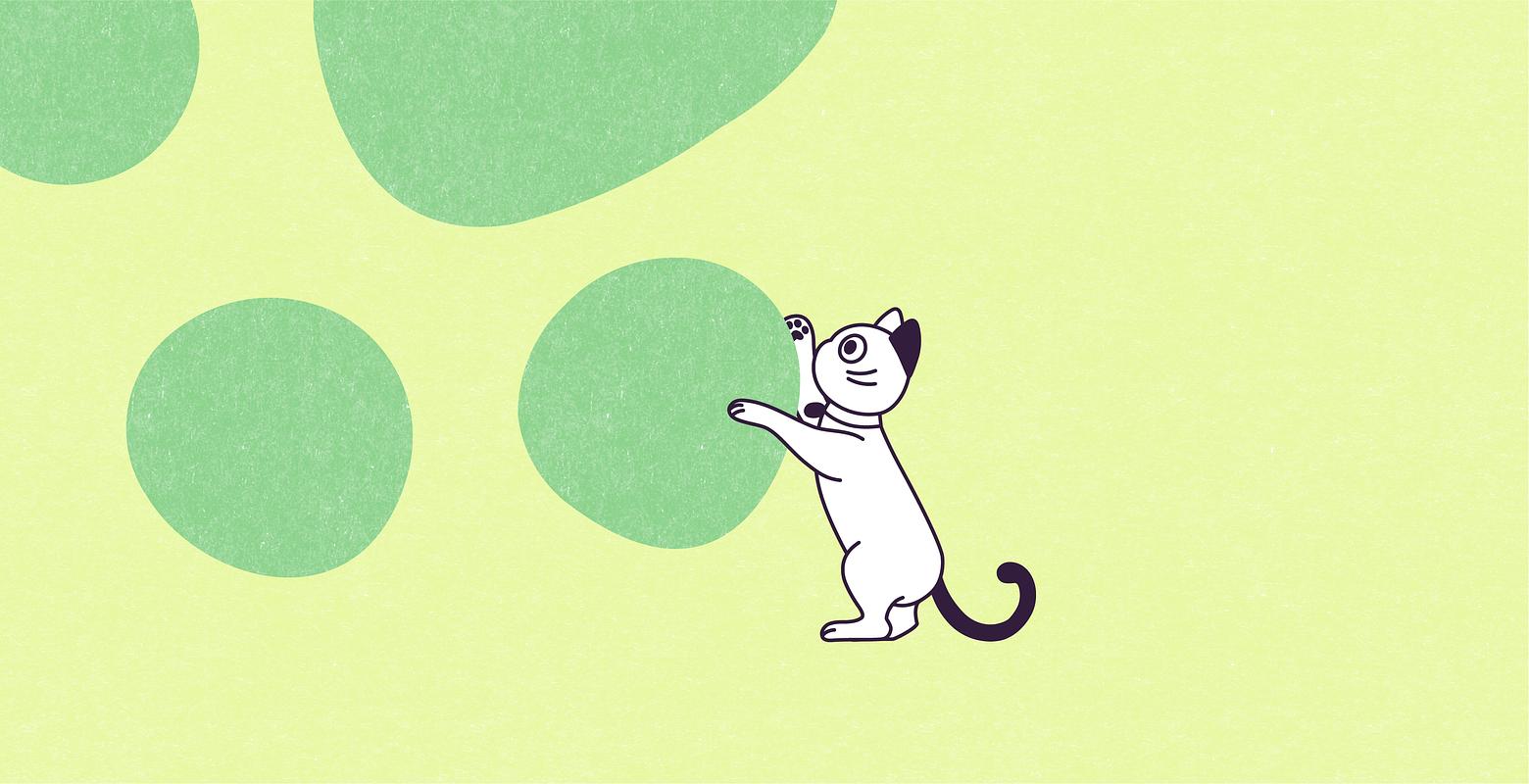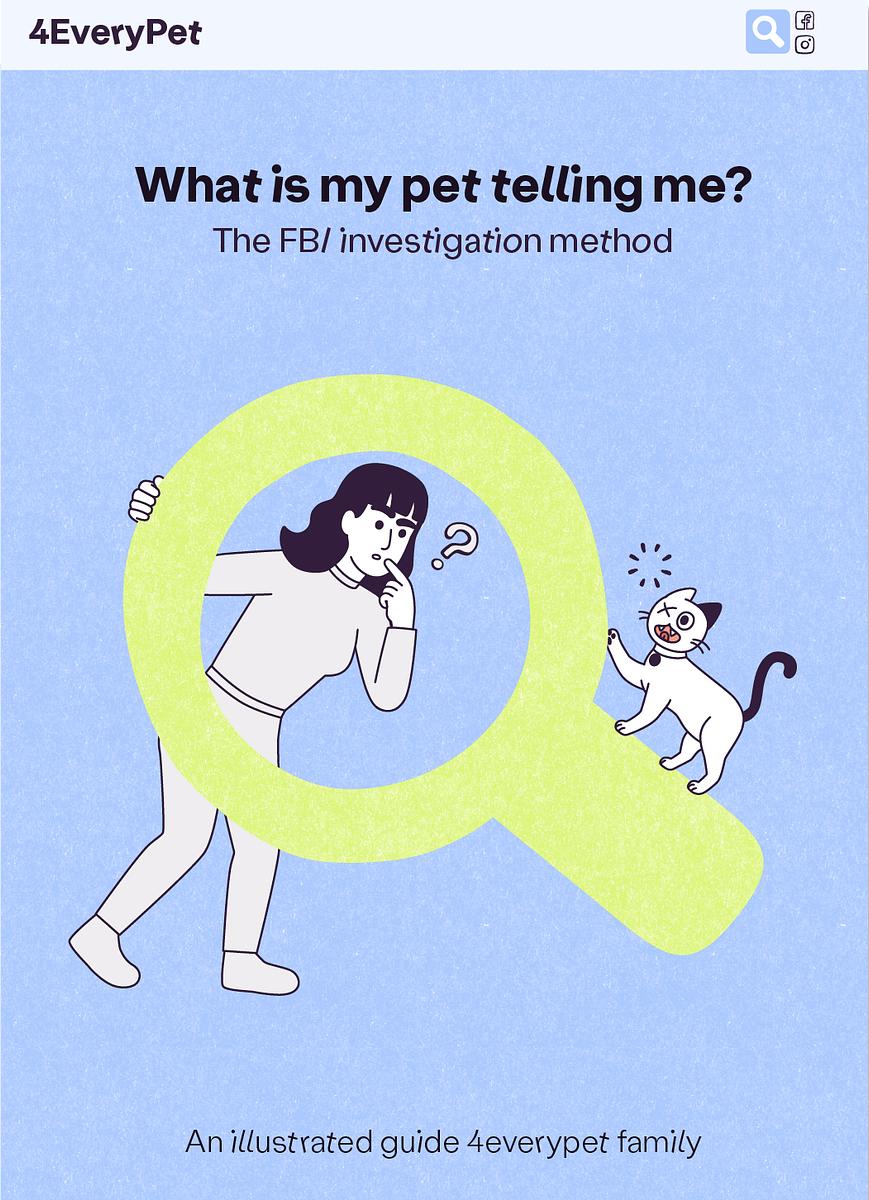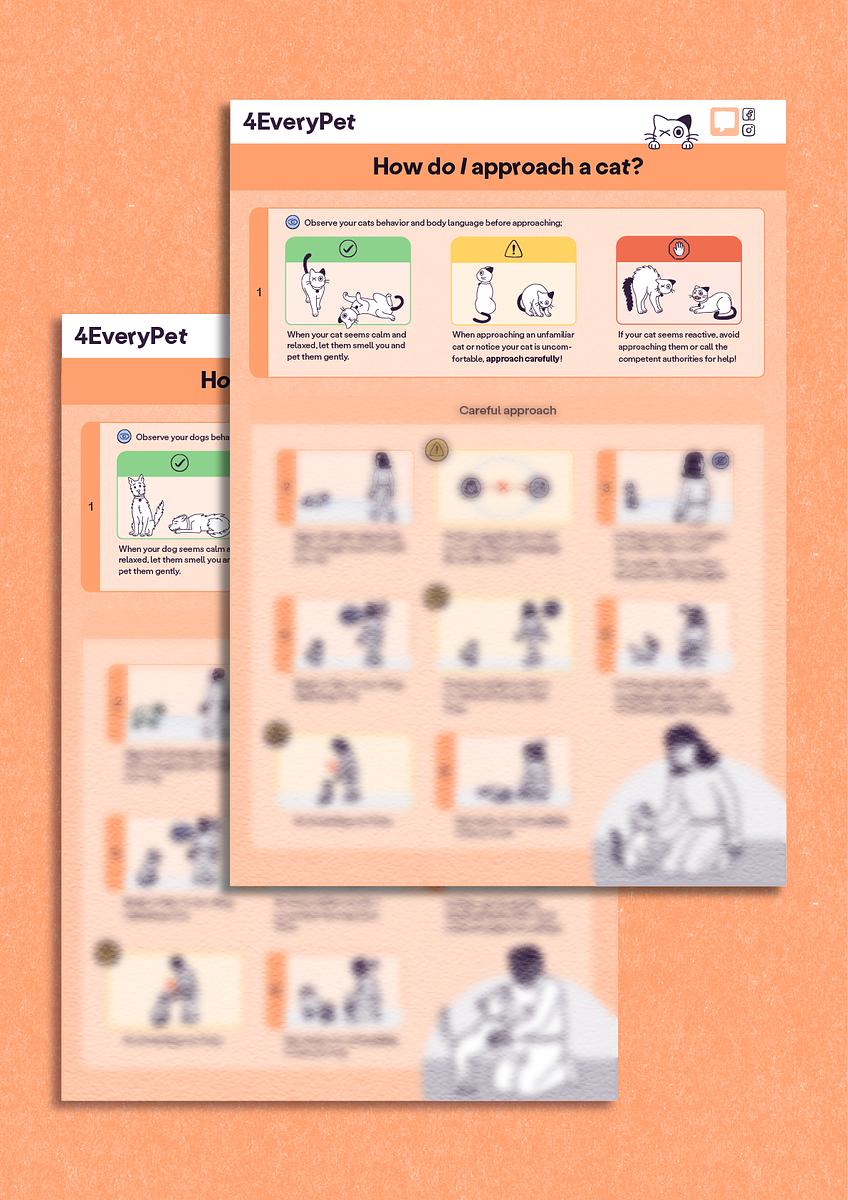Cats are part of our families, but we speak different languages. We created a pet language investigation method to help you understand your cat better.
For your investigation to create a successful translation and lead to many joyful interactions with your cat, we begin by gathering clues in your cat’s body language.
To dig deeper into the complete process of this investigation, check out our previous blog post on how to investigate pet body language.
Let's begin!
Look for the clues
Every clue is crucial and meaningful in studying the message your pet is sending you.
Cat eye dictionary
Learning about cat eye movements
Cat’s eyes send more subtle clues. Their pupils can dilate or constrict in response to light intensity, but when cats are defensive or stressed, they dilate their pupils to gather more information. Dilated pupils can also be a sign of pain. It is important to look at the context for a better understanding.
When your cat is interested in an object, person, or another pet, they may stare without blinking, with slightly dilated pupils. If they feel threatened, they will give a direct stare, and the eyelids may partially close or be drawn into a squint.
Your cat may also avoid eye contact if they feel insecure or to avoid conflict. They may also blink slowly. These are calming signals and can be used to show discomfort and stop or prevent conflict.

Pupils are contracted
Your cat feels safe and relaxed.

Pupils dilated
Your cat may be anxious or apprehensive and is trying to gather more information.
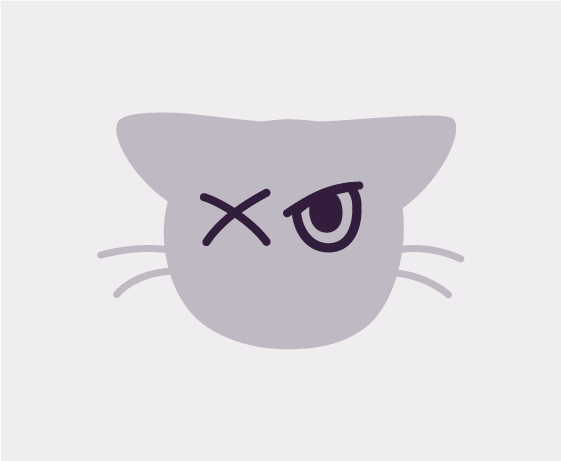
Squint eyelid
Your cat feels threatened and is ready to defend themselves.
Don't miss out on the opportunity to check out our previous blog post for more clues: Cat Ear Dictionary
That’s it! Observe your cat's body language. After some time, most steps will come to you naturally. Keep an eye out for our next blog post. We'll explore how your cat's tail can show you how they’re feeling.
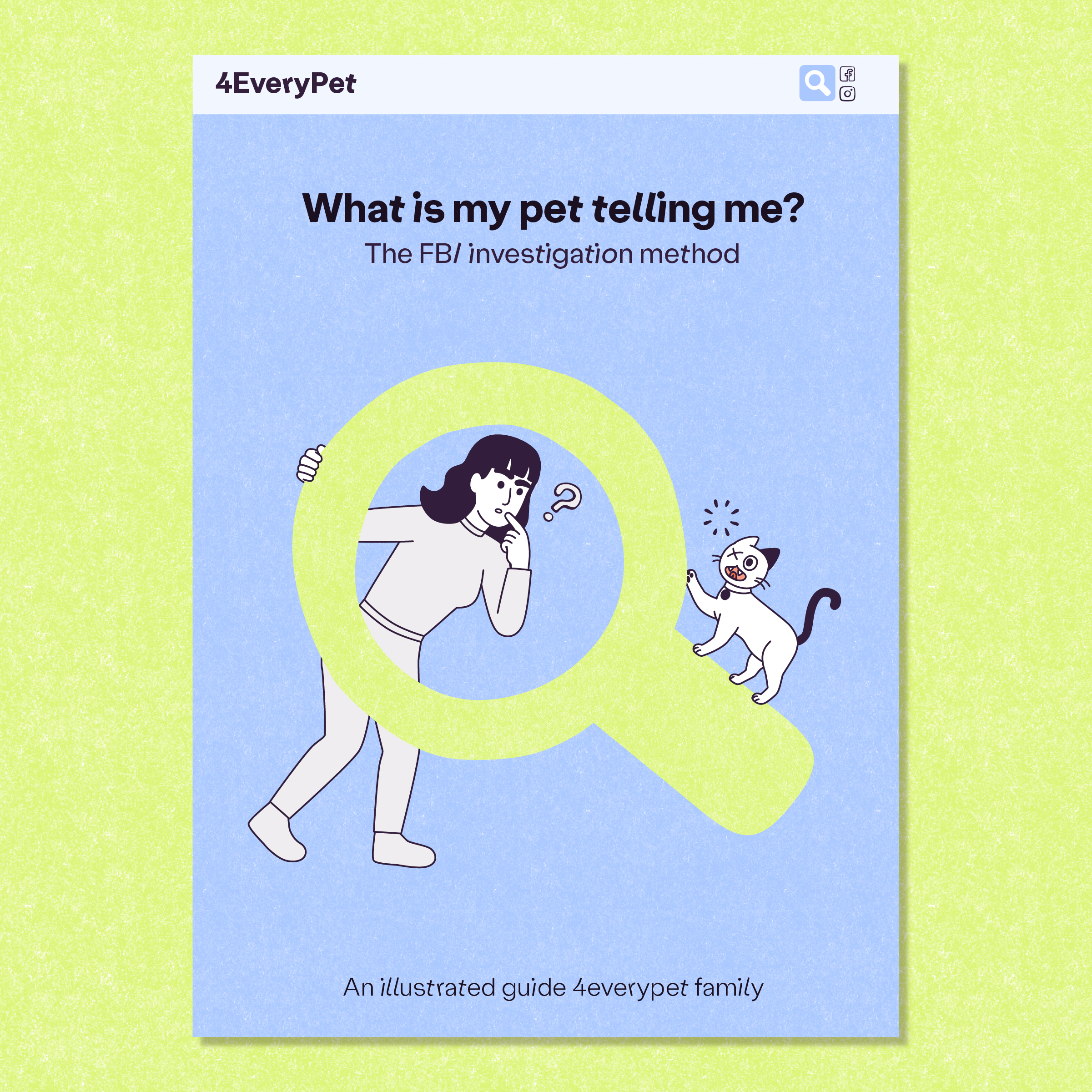
Can't wait to explore the FBI Investigation Method?
You can now access the complete Method in the ebook. Start investigating today!
Thank you for reading!
4EveryPet can only exist thanks to your support. Please share this blog post or buy us a Ko-fi to help keep our content available 4everyone!
